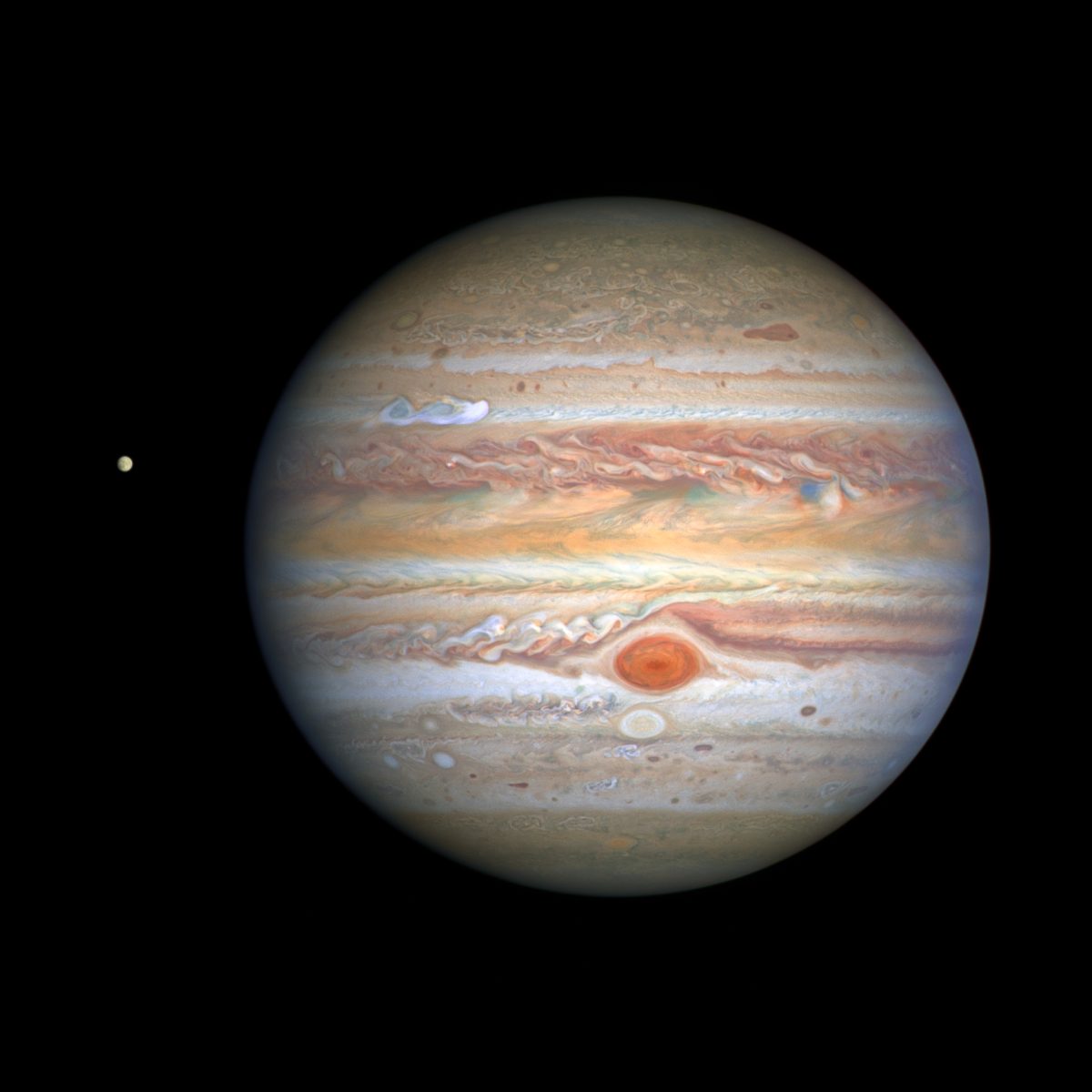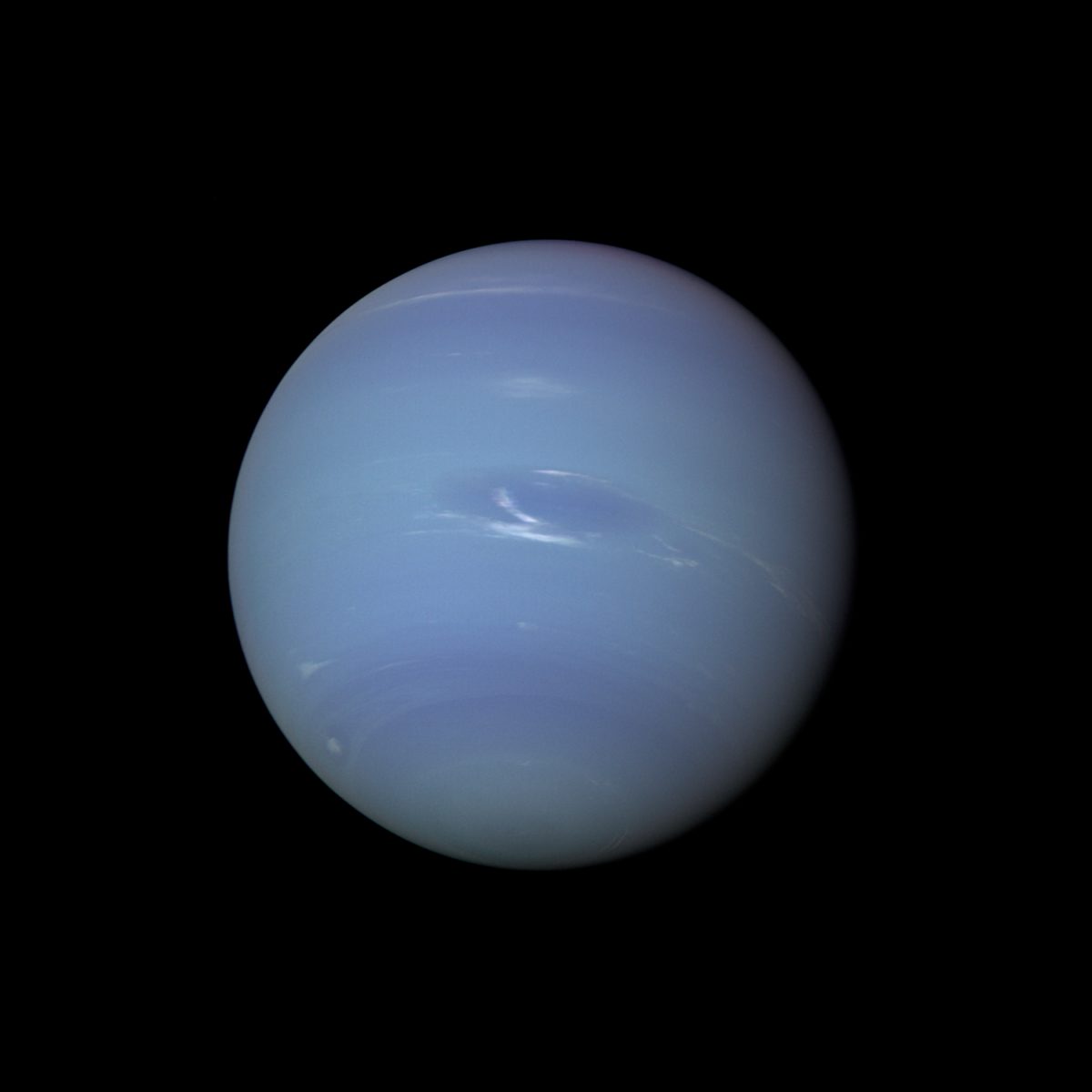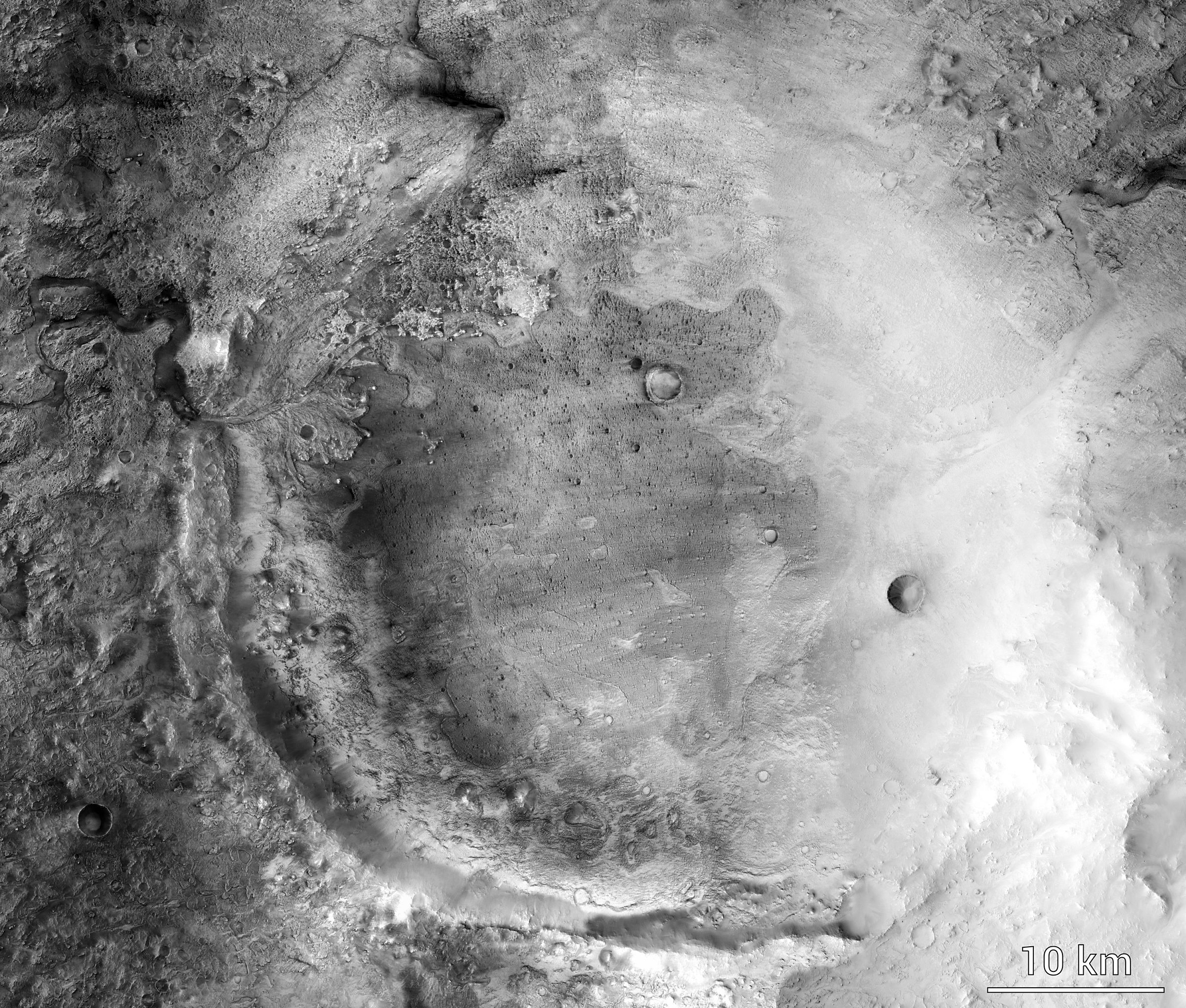The Downlink • Oct 02, 2020
Jupiter dazzles and Neptune beckons
Space Snapshot

There is so much to take in and appreciate about this recent image of Jupiter, captured by NASA’s Hubble Space Telescope in August 2020. It showcases the spectacular beauty of this marbled gas giant, while also shedding light on the dynamic processes taking place in its clouds. Scientists have identified a new storm brewing across the planet's mid-north, traveling at about 560 kilometers (350 miles) per hour and appearing as a swirly white band. If all that isn’t enough, we also get to see Jupiter’s moon Europa to its left. Image credit: NASA et al.
You love space, now take action
This weekly newsletter is your toolkit to learn more about space, share information with your friends and family, and take direct action to support exploration. Anyone can subscribe at planetary.org/connect to receive it as a weekly email.
Mission Briefings


A new look at data from the European Space Agency’s Mars Express spacecraft strengthens the case for saltwater lakes under Mars’ south polar cap. The results came from an analysis of 134 radar images taken over 10 years. Learn more about Mars and what water on its surface might mean for the search for life. Pictured: Mars’ south pole, captured by the European Space Agency’s Mars Express orbiter in 2015. Image credit: ESA/DLR/FU Berlin/Bill Dunford.

NASA is pushing back the launch date for Dragonfly, a flying spacecraft that will explore Saturn’s moon Titan. Dragonfly was originally scheduled to launch in 2026 but will now blast off in 2027. NASA cites budget shortages related to COVID-19 as a reason for the delay. Learn more about the mission here.

A Northrop Grumman Cygnus cargo ship was scheduled to blast off for the International Space Station Thursday just as The Downlink went to press. Among the vehicle contents: a new space toilet that “further automates waste management and storage,” a function we’re sure future astronauts will appreciate.

Speaking of the International Space Station, ground controllers are trying to find the source of a small air leak. While the crew isn’t in any danger, they have been helping with troubleshooting efforts, which now point to Russia’s Zvezda module as the likely source. Zvezda was launched in 2000 and became the station’s third module. Learn more about the ISS here.

Scientists have released the first long-term radiation data for the far side of the Moon, using a German instrument aboard China’s Chang’e-4 lander. The dose rate varies between 5 and 10 times higher than that of a typical passenger jet flight, implying future long-term lunar astronauts will need some form of radiation protection. Learn all about the Moon here.
From The Planetary Society

“Every world deserves to be celebrated and explored.” Veteran astronomer and planetary scientist Heidi Hammel voiced this sentiment on Planetary Radio two years ago. She echoes it again this week in her discussion of ground and space-based telescopes and how they can help us understand the lesser-explored worlds of our solar system like Uranus and Neptune (pictured).
What's Up

On 6 October Mars will be at its brightest as it reaches its closest point to the Earth. Look for the reddish planet in the eastern evening sky. Rising earlier in the evening are bright Jupiter and yellowish Saturn. In the predawn sky, Venus shines very brightly in the east.
Join Bill Nye for the Perseverance Rover Landing!

On 18 February 2021, the world will watch NASA’s Perseverance rover make an epic landing in Mars’ Jezero Crater (pictured). Want to make your viewing party extra special? We’re partnering with Omaze to send one winner to Los Angeles to join Planetary Society CEO Bill Nye at a highly exclusive event to hear his commentary during Perseverance’s monumental landing. Learn more and sign up here! The deadline to enter is 13 October 2020 at 11:59 pm PT. Note: We’re monitoring all travel restrictions and safety recommendations, and we’ll provide updates accordingly. Image credit: NASA / JPL-Caltech / MSSS / Tanya Harrison.
Wow of the Week

What is going on in this image of Saturn’s moon Enceladus? Basketball fans might see a resemblance to the Toronto Raptors logo (the Canadian who writes this newsletter certainly does). Created using infrared data collected by NASA's Cassini spacecraft, the red regions with claw-like stripes correspond to warmer surface temperatures. In this area cryovolcanic geysers vent subsurface ocean water into space. Image credit: NASA et al.
Do you have a suggestion for the Wow of the Week? We’re looking for space-related art, music, gadgets, quotes, fashion, burning questions, brief sci-fi passages, or anything else that will make our readers go “Wow!” Send us your idea by replying to any Downlink email or writing to [email protected], and please let us know if you’re a Planetary Society member.


 Explore Worlds
Explore Worlds Find Life
Find Life Defend Earth
Defend Earth


